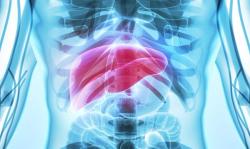
OR WAIT null SECS
Dietary Selenium Intake May Lower Risk of Cardiovascular Disease
New research links increased dietary selenium intake to reduced cardiovascular disease risk, highlighting its potential benefits for heart health.
New research has uncovered an association between increased dietary selenium intake and cardiovascular disease (CVD) risk reduction.
Existing evidence has highlighted the various impacts of dietary selenium intake on several aspects of health. A previous cross-sectional study revealed that increased selenium intake can decrease the chances of developing kidney stones in adults >60 years. It has also been proven to improve bone density and reduce the risk of arthritis.2,3
“Despite these valuable insights, there is a lack of large-scale studies examining the specific impact of dietary selenium intake on CVD in the general population,” wrote Dan Liang, department of endocrine, People’s Hospital of Chongqing Liangjiang New Area, and colleagues. “Consequently, there is a pressing need for further research in this area, aiming to elucidate the relationship between dietary selenium intake and CVD incidence.”1
The team collected data from the National Health and Nutrition Examination Survey (NHANES), a nationally representative, serial cross-sectional survey. Continuous data from survey cycles between 2003 and 2018, collected at 2-year intervals, were utilized for the initial sample.1
Initial enrollment was 80,312 participants; investigators excluded those <20 years and those with missing data on either selenium intake or certain cardiovascular conditions. The final count was 39,372 participants, with a mean age of 47.27 years, including 51.79% females. Average dietary selenium intake was 114.67 +/- .53 μg/d.
The team conducted a sensitivity analysis by separating dietary selenium intake into tertiles to determine the robustness of the results and to assess the risk of CVD across multiple subgroups.1
The overall prevalence of CVD was 8.57%, which decreased as selenium intake increased across tertiles (Tertile 1: 11.10%; Tertile 2: 8.12%; Tertile 3: 6.75%). Participants in the highest selenium intake exhibited reduced risk of stroke, heart attack, angina, congestive heart failure (CHF), coronary heart disease (CHD), and atherosclerotic cardiovascular disease (ASCVD). The fully adjusted models indicated a 16% reduction in CVD risk for Tertile 2 (odds ratio [OR], 0.84; 95% CI, .74-.96, P = .01), although the highest tertile of selenium intake did not exhibit this association significantly (OR, .96; 95% CI, .78-1.17, P = .66).1
An analysis of subgroups indicated that the association between dietary selenium intake and CVD risk remained consistent despite different statuses. However, Liang and colleagues noted that the negative association between selenium intake and ASCVD risk was heavily influenced by hypertension.1
A restricted cubic spline (RCS) analysis indicated a significant association between dietary selenium intake and CVD risk. This association exhibited a distinctly nonlinear trend (P overall = .0002, P nonlinear = .0001) – as dietary selenium increased, the risk of CVD decreased to a certain threshold. Notably, however, after this inflection point (135.28 μg/d), protective effects began to weaken, and higher selenium may even increase CVD risk past this point. A similar inflection point exists for stroke at 100.3 μg/d.1
Liang and colleagues believe these results indicate another avenue for monitoring CVD risk in patients. However, they also suggest that further research is necessary to clear up remaining questions, including the mechanism by which selenium influences CVD.1
“Given the substantial global burden of cardiovascular disease, these findings could play a crucial role in shaping recommended selenium intake levels for public cardiovascular health,” Liang and colleagues wrote. “Further research is needed to validate these results and explore the underlying mechanisms in greater detail.”1
References
Liang D, Liu C, Zhang X. Association between dietary selenium intake and the risk of cardiovascular disease in US adults: a population-based study. Sci Rep. 2025;15(1):13427. Published 2025 Apr 18. doi:10.1038/s41598-025-97867-7
Qi Q, Hu Y, Chen Y, Xu Y, Hao Z. Dietary Selenium Intake and Kidney Stones in Old Adults: an Analysis from NHANES 2011 to 2018. Biol Trace Elem Res. 2023;201(4):1588-1595. doi:10.1007/s12011-022-03282-8
Xue G, Liu R. Association between dietary selenium intake and bone mineral density in the US general population. Ann Transl Med. 2022;10(16):869. doi:10.21037/atm-22-3441
Related Content:


